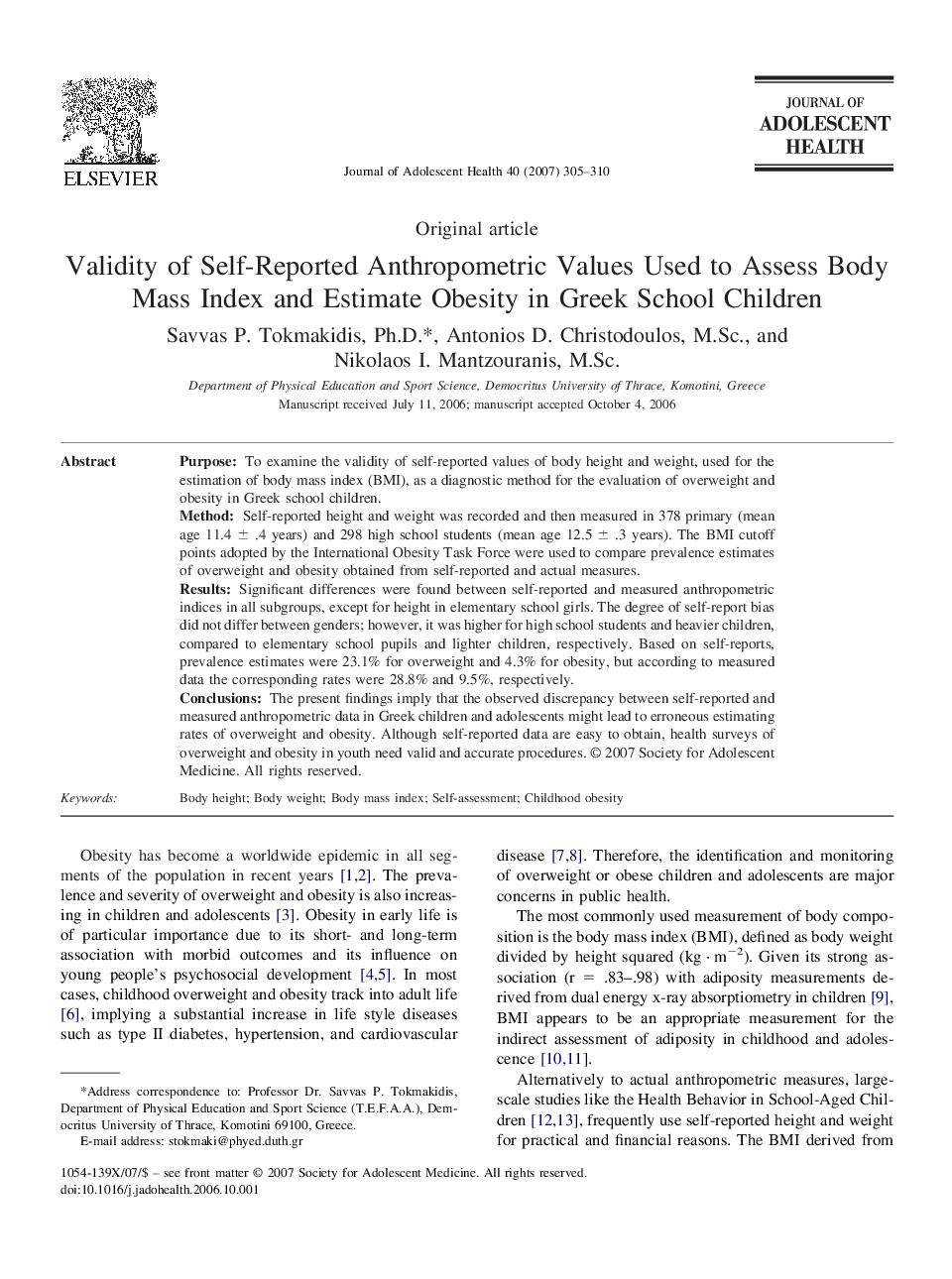| Article ID | Journal | Published Year | Pages | File Type |
|---|---|---|---|---|
| 1080845 | Journal of Adolescent Health | 2007 | 6 Pages |
PurposeTo examine the validity of self-reported values of body height and weight, used for the estimation of body mass index (BMI), as a diagnostic method for the evaluation of overweight and obesity in Greek school children.MethodSelf-reported height and weight was recorded and then measured in 378 primary (mean age 11.4 ± .4 years) and 298 high school students (mean age 12.5 ± .3 years). The BMI cutoff points adopted by the International Obesity Task Force were used to compare prevalence estimates of overweight and obesity obtained from self-reported and actual measures.ResultsSignificant differences were found between self-reported and measured anthropometric indices in all subgroups, except for height in elementary school girls. The degree of self-report bias did not differ between genders; however, it was higher for high school students and heavier children, compared to elementary school pupils and lighter children, respectively. Based on self-reports, prevalence estimates were 23.1% for overweight and 4.3% for obesity, but according to measured data the corresponding rates were 28.8% and 9.5%, respectively.ConclusionsThe present findings imply that the observed discrepancy between self-reported and measured anthropometric data in Greek children and adolescents might lead to erroneous estimating rates of overweight and obesity. Although self-reported data are easy to obtain, health surveys of overweight and obesity in youth need valid and accurate procedures.
